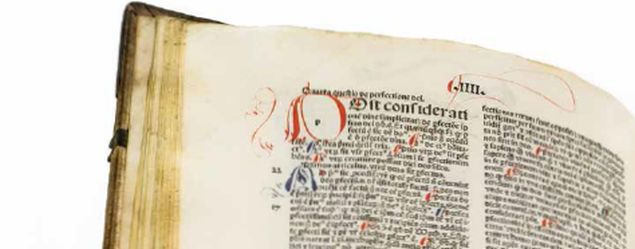
Commentaries on the Exhibit’s Works
Files
Download Commentary (180 KB)
Description
A brief commentary prepared by Miriamne Ara Krummel, PhD, Associate Professor, English, on the following work:
Geoffrey Chaucer
Canterbury Tales
London , ca. 1492; from the collection of J. Pierpont Morgan
Permission Statement
This item and all others in the Imprints and Impressions collection are licensed for research, educational and private use. Proper attribution must be used when downloading or reproducing this content. If you wish to use the materials for other purposes, please contact University of Dayton Libraries to obtain permission: 937-229-4221.
Contents of Streaming Media
Bobbi Sutherland, assistant professor of English, reflects on her first experiences reading the Canterbury Tales and discusses the significance of Geoffrey Chaucer’s work for medieval historians.




Comments
Starting as a young page in the household of the Countess of Ulster and later laboring as a forester, sheriff, keeper of the gates, and possibly even a spy, Geoffrey Chaucer—whom fifteenth-century poets dubbed “the father of English literature”—amassed vast storehouses of information for his imagination. Though he composed many works—incidental poetry, dream visions, a scientific treatise, and epic love poetry—he is best known for the collection of stories he never completed: The Canterbury Tales.After Chaucer’s death in 1400, his eldest son, Thomas, arranged to have The Canterbury Tales cast into a beautiful volume, written by a trained scribe. This volume, now known as the Ellesmere Chaucer, includes elaborately introduced paragraphs and miniatures of the pilgrims telling the tales. Among these miniatures is Chaucer, who as a pilgrim tells “The Tale of Sir Thopas” and “The Tale of Melibee.” The copy on exhibit is an early modern print edition.